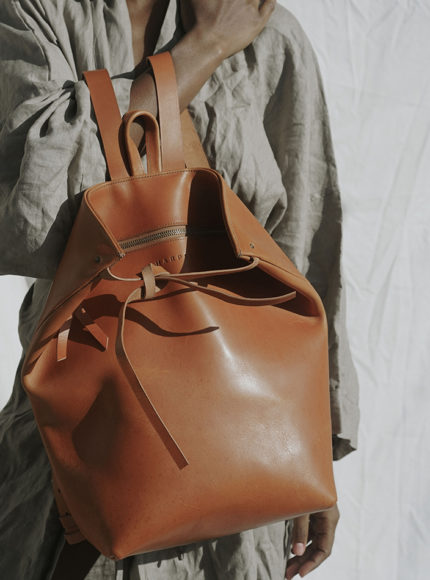

@harper_thelabel
Photography by @mvid




Photography by @mvid
Fashion
A Word on Ethical Leather Sourcing by Harper the Label
We were so thrilled to recently launch Harper the Label to our curation of sustainable leather goods. Keen to know more about the ethical sourcing of leather, and the risks associated with chrome-tanned leather, we asked founder Claire to share her knowledge all about the subject.
This editorial was kindly shared with us by Harper the Label.
80 to 90% of leather made is chrome tanned which hosts a plethora of health and environmental risks.
What are the risks of sourcing chrome tanned leather?
One of the main reasons that I founded Harper the Label was that I found that most people want to make an ethical choice when it comes to the pieces that they purchase, but the leather industry has long been an opaque and hidden one that is very protective of its secrets.
There are two types of leather available today: chrome tanned and vegetable tanned. 80 to 90 percent of the leather that is created is the former, which means that it is quickly tanned in an industrial process that uses chemicals like chromium and arsenic, among others. These chemicals have been definitively linked to a host of human health and environmental health ills, including cancers, low birth weight and premature births, as well as ground water pollution.
Chrome tanned leather can be done safely if there are proper protocols in place to protect the people and land where tanneries exist, but the issue is that we have pushed tanneries to places in the world where it is expensive and difficult to enforce these kinds of protections.
‘Ethics were a founding part of my label, and sourcing clean, vegetable tanned leather was the first pillar of that pledge.’
The safe and ethical alternative.
The other option is vegetable tanned leather, or chrome-free leather, which is as old as humankind. It uses the tannins (like in wine) from organic matter like bark, seed pods, and leaves to slowly cure the hides and make them water resistant. Vegetable tanned leather naturally shows more of a patina as it ages, which I think makes a beautiful statement of the journey we’re each on. After all, freckles and wrinkles are beautiful for the story they tell about a well-lived life!
Ethics were a founding part of my label, and sourcing clean, vegetable tanned leather was the first pillar of that pledge. I also believe in circularity and considering the entire life cycle of the product. I partner with Terrapass to carbon offset every single bag I make, not just to offset the carbon released in shipping but also the methane created during the animal’s lifecycle.
‘Even some of the newer vegan leathers, like cactus leather and apple leather, contain some percentage of plastic to make them more flexible and leather-like.’
Working towards a sustainable future.
My goal is to eventually release every design in Harper the Label’s Core Collection in a plastic-free animal-free leather, because I believe that we should all be empowered to make the choices that work best for ourselves.
At the moment, the only vegan alternative we have for animal leather is plastic: most are made of PVC or PU, which is a direct product of petroleum. Even some of the newer vegan leathers, like cactus leather and apple leather, contain some percentage of plastic to make them more flexible and leather-like. To me, these aren’t ethical choices given what we know about microplastics leaching into our drinking water, the health hazards of wearing plastic, and the simple fact that any plastic in landfills will long outlive any of us.
At the end of the day, I believe in education and empowering others to make the choices that work best for them. Radical transparency, not green washing, is the way that the leather industry can be made sustainable.
































